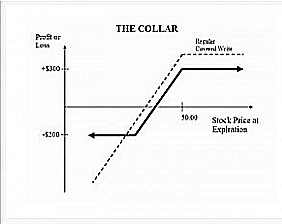Split strike conversion strategy
That Bernard Madoff was playing a giant ponzi game is now well known. But what is not that well known is the strategy that he claimed to have implemented. This article discusses the Madoff strategy called the split-strike conversion. It explains why traders construct such a strategy and the conditions under which it is gainful. It also shows how the strategy can be modified to suit the present market conditions in India. But why is it called split-strike conversion?
A conversion is a strategy where the trader buys an underlying contract and sells an offsetting synthetic contract. Suppose a trader buys the Nifty futures contract at She would then sell the March calls ATM and buy March ATM puts. The options-leg of the transaction is essentially a short position on the Nifty at The conversion employs same strike for calls and puts.

In a split-strike conversion, the ATM strike is instead split into two different OTM strikes. Madoff claimed to implement the strategy for short-term horizons, delivering between 8 per cent and 12 per cent returns regardless of the market conditions. A skew can be understood as a graph that plots the implied volatilities of various strikes of the same underlying for a particular month. If the implied volatilities of calls are greater than implied volatilities of puts, a trade can sell calls and buy puts.
The problem at present is that the implied volatilities of puts are higher than implied volatilities of calls. The March puts, for instance, trades at Wednesday prices an implied volatility of 47 while calls trade at an implied volatility of Traders can, nevertheless, set-up a fence in the following scenario: First, a trader has to hold large-cap stocks that are closely correlated to the Nifty.
Hedge Fund
Second, the trader has to have a view that the underlying shares and therefore the index will decline in the near term. The trader can then buy OTM puts and sell OTM calls on the Index for the notional value as the underlying shares. Suppose the Nifty does decline in value, the OTM puts will generate substantial gains while the calls will expire worthless.
The People's Cube - Political Humor & Satire
This generates income for the trader, even if the implied volatilities of puts are higher than that of calls. Traders can also adopt this strategy with a single stock or a futures contract. The criterion is that the primary position the stock or the futures contract has to be held for the longer term, unlike in the case of typical split-strike conversion, where the underlying is bought to arbitrage price differentials.
split strike conversion strategy | The Blue Collar Investor
If the underlying moves up, the trader can contain the losses on the synthetic position by selling the underlying with the intention of buying it back at a lower price at a later date.
Split-strike conversion is gainful only if the option skew favours the strategy. And even then, traders have to consider the cost of setting up the strategy, as there is two-leg brokerage commission. A directional fence discussed above may be more appropriate for traders who carry a negative bias.
The author is an investment strategist. He can be reached at enhancek gmail. Catalyst Multimedia Today's Paper Topics ePaper WealthCheck. Worried investor looking at the monitor at Bombay Stock Exchange thinking about his investment. This article was published in the Business Line print edition dated February 22, Get more of your favourite news delivered to your inbox. About Us Contacts Privacy Policy Archives Subscription RSS Feeds Site Map Brand Quest ePaper Social BL Club Mobile Group Sites: NEVER miss any latest news!